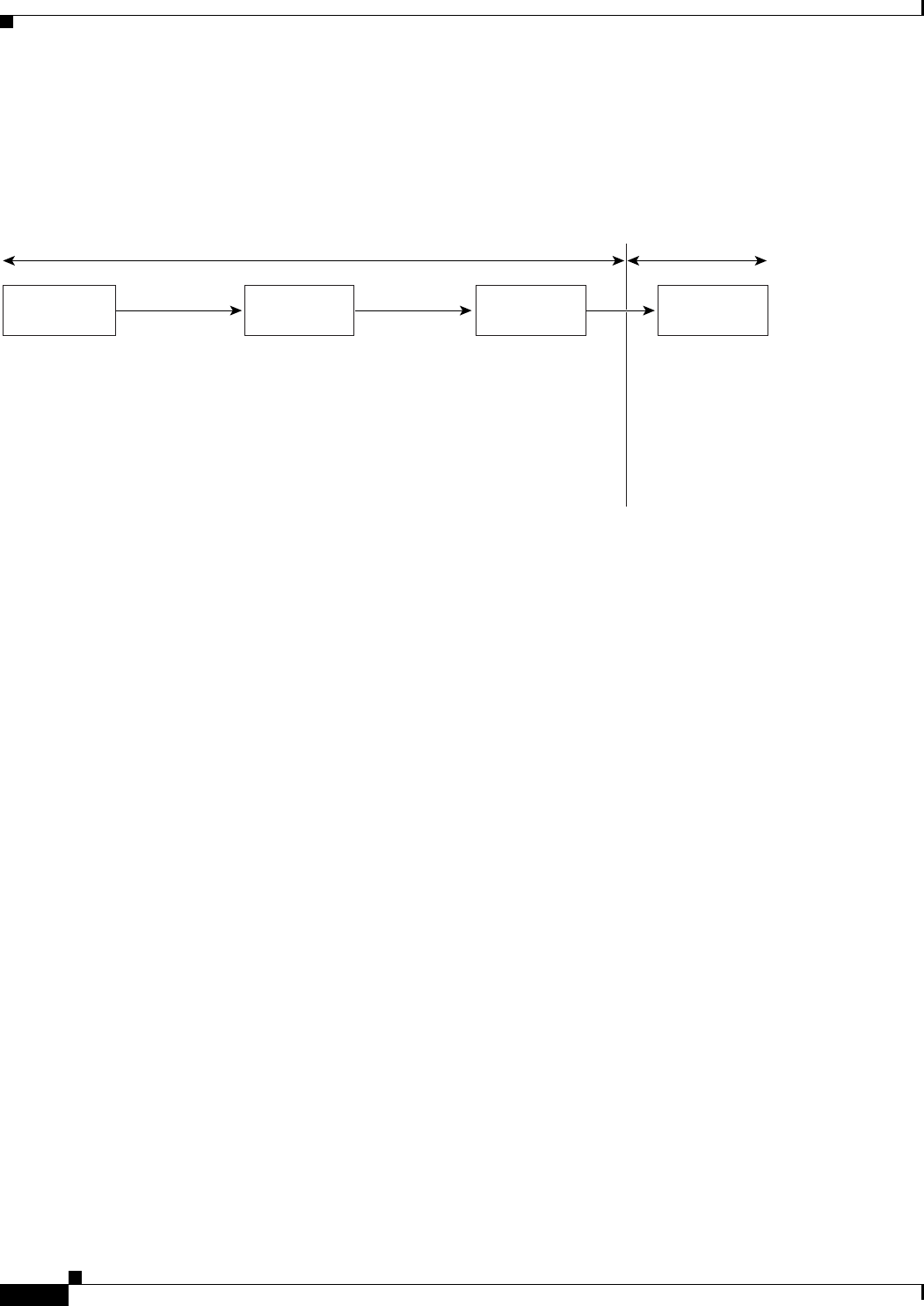
27-6
Software Configuration Guide—Release 12.2(25)SG
OL-7659-03
Chapter 27 Configuring Quality of Service
Overview of QoS
• Scheduling services the four egress (transmit) queues based on the sharing and shaping
configuration of the egress (transmit) port. Sharing and shaping configurations are described in the
“Queueing and Scheduling” section on page 27-14.
Figure 27-2 Basic QoS Model
Classification
Classification is the process of distinguishing one kind of traffic from another by examining the fields
in the packet. Classification is enabled only if QoS is globally enabled on the switch. By default, QoS is
globally disabled, so no classification occurs.
You specify which fields in the frame or packet that you want to use to classify incoming traffic.
Classification options are shown in Figure 27-3.
For non-IP traffic, you have the following classification options:
• Use the port default. If the packet is a non-IP packet, assign the default port DSCP value to the
incoming packet.
• Trust the CoS value in the incoming frame (configure the port to trust CoS). Then use the
configurable CoS-to-DSCP map to generate the internal DSCP value. Layer 2 ISL frame headers
carry the CoS value in the three least-significant bits of the 1-byte User field. Layer 2 802.1Q frame
headers carry the CoS value in the three most-significant bits of the Tag Control Information field.
CoS values range from 0 for low priority to 7 for high priority. If the frame does not contain a CoS
value, assign the default port CoS to the incoming frame.
The trust DSCP configuration is meaningless for non-IP traffic. If you configure a port with trust
DSCP and non-IP traffic is received, the switch assigns the default port DSCP.
For IP traffic, you have the following classification options:
• Trust the IP DSCP in the incoming packet (configure the port to trust DSCP), and assign the same
DSCP to the packet for internal use. The IETF defines the six most-significant bits of the 1-byte
Type of Service (ToS) field as the DSCP. The priority represented by a particular DSCP value is
configurable. DSCP values range from 0 to 63.
• Trust the CoS value (if present) in the incoming packet, and generate the DSCP by using the
CoS-to-DSCP map.
68141
Classification Policing
Generate DSCP
Actions at ingress and egress Actions at egress
Mark
In profile or
out of profile
Inspect packet and
determine the DSCP
based on ACLs or
the configuration.
Map the Layer 2
CoS value to a
DSCP value.
Compare traffic rate to
the configured policer
and determine if the
packet is in profile or
out of profile.
Based on whether the
packet is in or out of
profile and the configured
parameters, determine
whether to pass through,
mark down, or drop the
packet. The DSCP and
CoS are marked or
changed accordingly.
Queueing and
scheduling
Based on the marked
DSCP, determine into
which of the egress
queues to place the
packet. Then service
the queues according
to the configured
weights.


















